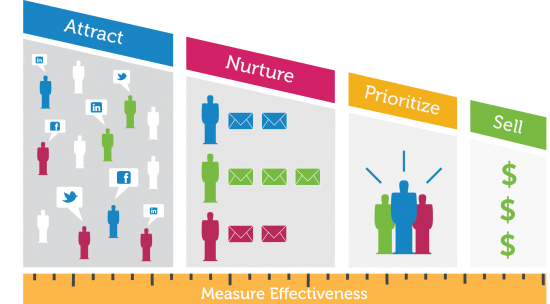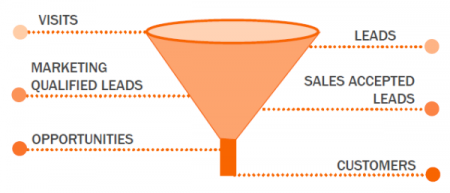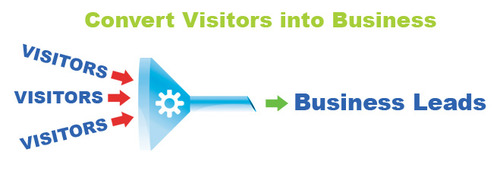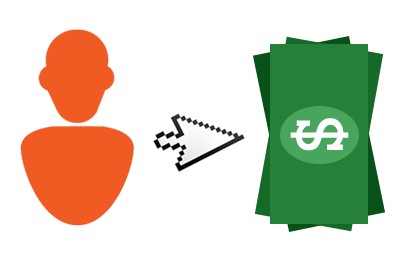How to Use Automation to Build Real Relationships at Every Stage of the Funnel
You must look at the sales funnel as a journey. This journey is made up of multiple campaigns that work hand in hand to earn leads and sales for your small business. These campaigns work together to build relationships with your prospects and to turn strangers into friends, friends into customers, and customers into loyal fans.
It sounds overly complicated, right?
Well, it doesn’t have to be like that.
At the end of the day, there are only two things that will help you to build genuine relationships with your prospects. Yes, just two.
Number one: you have to understand WHO you are talking to;
Number two: you must know at WHAT stage you are in your relationship. After all, you would never ask a person you just met to marry you, wouldn’t you?
The same principles apply to your sales funnel. You would never focus on someone who isn’t your target audience, and you would never ask someone who just learned about your business to pay $10,000 for your products.
That is where marketing automation comes on hand. It’s easy for marketers to try to upsell to their newly acquired customers without warming them up before. Automated campaigns help you build real relationships by targeting specific customers with specific messages at specific stages of the buying cycle.
Here’s how:
Top of the Funnel
When new visitors land on your website, they are at the top of the funnel. They are typically trying to solve a problem or fulfill a need, so they are looking for information that can help them figure out the best solution.
These visitors, also known as unqualified leads, are rarely ready to buy immediately and, the best way to scare them away is to overwhelm them with sales-heavy messages. You must build relationships first and then ask them to buy.
Top of the funnel is where you introduce yourself to your prospects, where you show them who you are and help them understand your business.
Goals for Top of the Funnel:
- Introduction – introduce your small business and try to establish credibility;
- Segmentation – if someone clicks on a hair product for curly hair, you know that they’re not just interested in hair products; they’re specifically interested in products for curly hair. That way you can make them relevant offers.
Types of Automated Content You Can Use At This Stage
You can automate different types of content to talk to your prospects at this stage of the funnel. Here are some:
- Blog posts;
- Lead magnets
- Social media content;
- Case Studies;
- Quizzes/Surveys
- How to articles
- FAQ pages
Middle of the Funnel
According to hubspot.com, the middle of the funnel is the most important part of the sales funnel, because it can turn visitors into qualified leads.
In this stage of the funnel, prospects know that they have a problem, and they are now looking for the best solution. They are familiar with your business but aren’t ready to buy yet. They are evaluating options, trying to decide if a product might be useful or whether they can trust the brand. The purpose of the middle of the funnel content is to tell prospects why their solution is the best choice.
You need to run automated campaigns that encourage them to convert into leads or buyers. You’ve already introduced yourself, they know what your business is about, it’s time to make your move.
Goals for Middle of the Funnel
- Generate leads – encourage prospects to subscribe to your newsletter, follow you on social media or buy your products;
- Convert leads into low dollar sales;
Types of Automated Content You Can Use At This Stage
You can automate different types of content to talk to your prospects at this stage of the funnel. Here are some:
- Lead Magnets;
- eBooks
- Case studies
- Buying Guides
- Webinars
- Testimonials
Bottom of the Funnel
A business can’t exist without customers. However, not all customers will help you build your business. That is one of the ironies of the business world.
With less than 5% of your website visitors falling into the bottom of the funnel, buyers are a rare species. But, they are also the most profitable.
Prospect at the bottom of the funnel are ready to buy. They’ve made their decision, they know what they want, and they are ready to hit the buy/sign up/register button.
As tempting as it might be to ignore the first two stages of the funnel and focus your efforts on the BOF customers, the reality is that your sales will drop if you neglect your non-converting visitors. By investing in content marketing and creating lasting relationships with visitors at every stage of the buying cycle, you can turn visitors into leads and leads into happy customers.
The main function of automated campaigns is to reach your top and middle of the funnel to acquire leads and customers. But you can use automation to reach your loyal customers, as well.
Goals for Bottom of the Funnel:
- Upsell – get your customers to buy another product or buy more frequently
- Activation – remind customers who haven’t purchased in awhile about your business. Get their interest with compelling offers or see if they are interested in a different product.
Types of Automated Content You Can Use At This Stage
Depending on what you are going to talk to your customers about at this stage of the funnel, you can upsell them or get them to turn from repeat buyers into loyal fans. Here are some of the types of automated content you need to include at this stage:
- High dollar offers
- Free trials
- Coupons
- Customized offers
- Done for you services
It goes without saying that understanding your visitors’ buying cycle and knowing where they are in the sales funnel can make your business more successful. Smart business owners know that automation can help them build relationships and turn prospects into buyers.







Leave A Comment